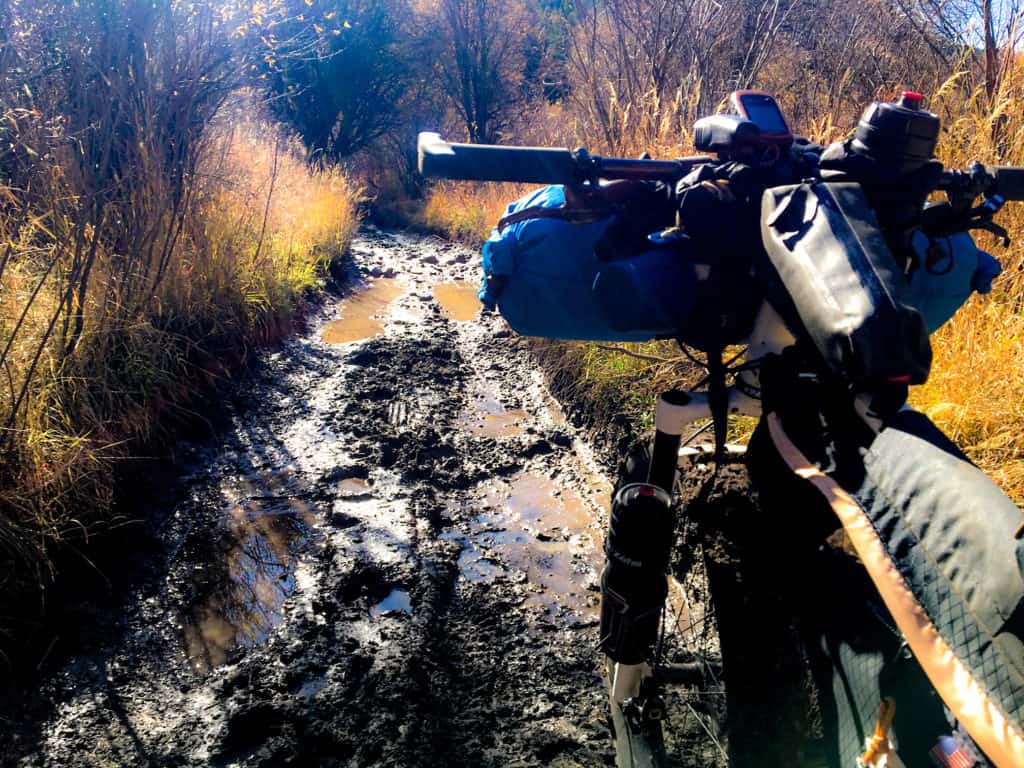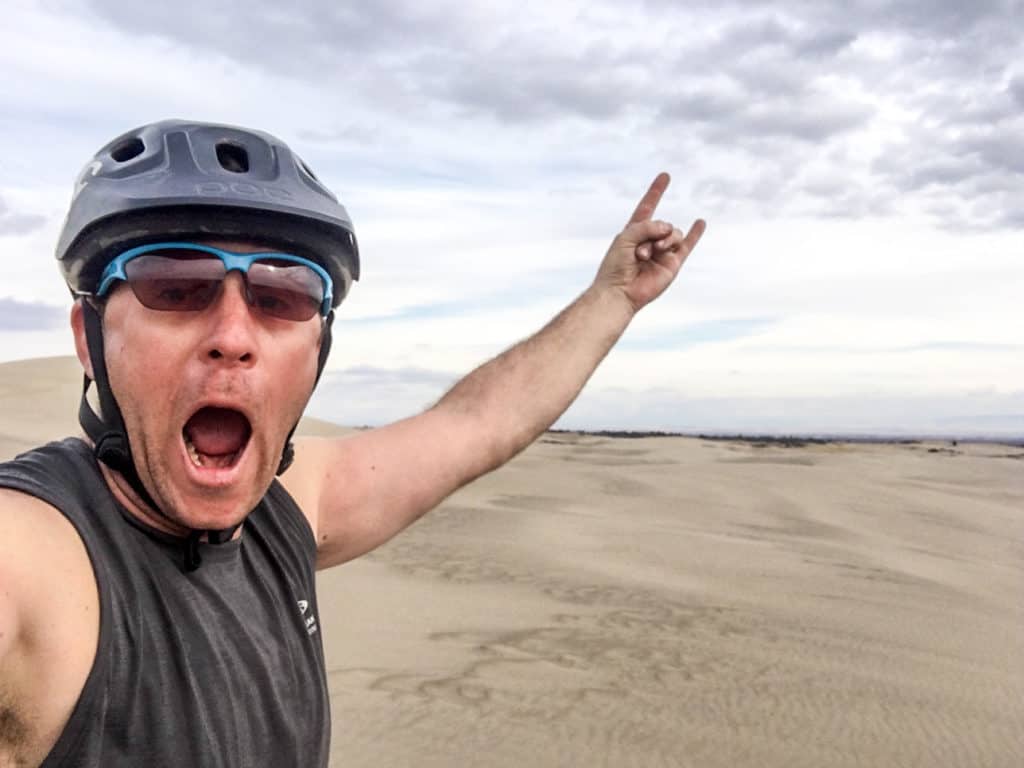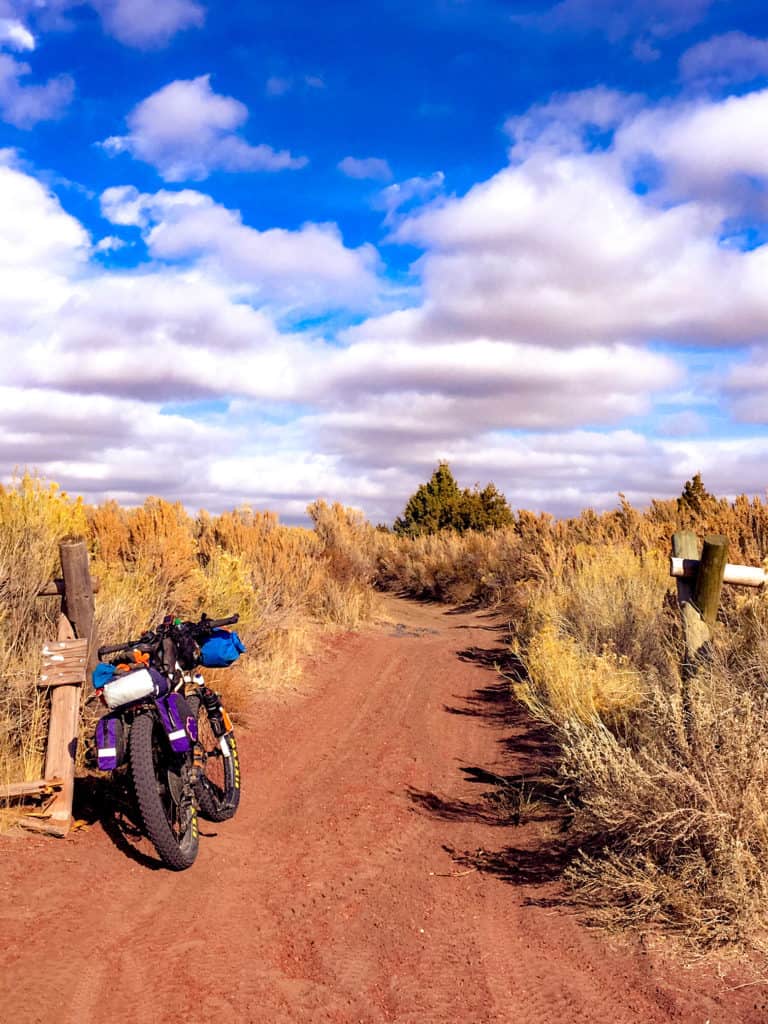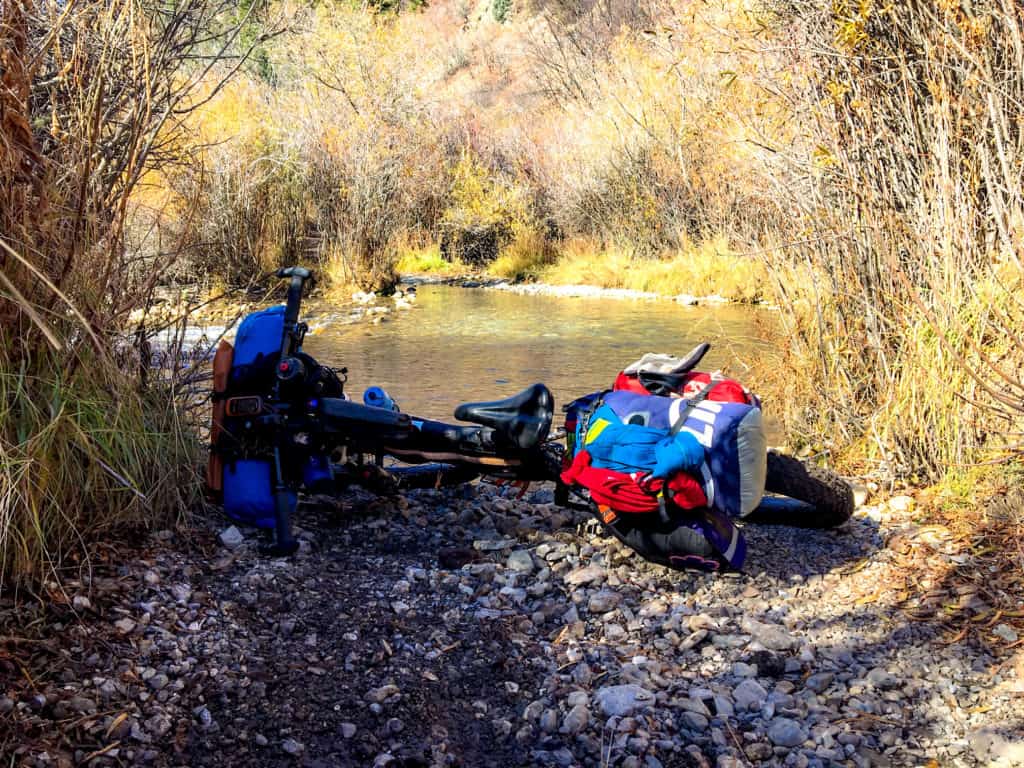Photos and adventure by Gary Chrisman. Words by Aaron Couch
Like many adventures, this bikepacking expedition started with enthusiastic inspiration and an idea — circumnavigate the great Eastern Idaho Sagebrush Steppe and Lava Flows, connecting mountain ranges to sand dunes — dubbed Dirt to Dunes.
When Derrick, owner of Fitzgerald’s Bicycles, pitched the idea to Gary Chrisman, Gary knew he had to pioneer this route. The next week, with a window in the time and weather, he set out to explore areas that even he had never ridden.
The arid terrain would be vast and desolate… intimidating to most. Yet, something about the uncertainty and unfamiliarity of this route intrigued him. Although it was right in his backyard, he had never ridden through the sagebrush steppe and lava flows and certainly never connected it all from the
On Day one, from Victor, Idaho at the top of Pine Creek Pass, Gary started his ride and descended down Rainey Creek towards Swan Valley. There were numerous creek crossings of early-October frigid water. Some he could ride without getting his feet wet, others he took off his shoes and socks and walked.

The Gore-Tex socks he wore made all the difference — while his shoes may have gotten wet, his feet stayed warm and dry.
Once in Swan Valley and making a quick stop at the Rainey Creek gas station, Gary continued up and over the Caribou Mountain Range via Fall Creek Road and through the hills of Bone, Idaho. It was here that the sun began to set and he lost the route multiple times. When the GPS course took him south through a canyon and a wildlife refuge, he was surprised and in awe.
“It would have been much easier to go the other way, but I’m glad I went the way I did.”

The double track followed a fence line for a while but then disappeared, becoming extremely rugged and unrideable altogether. It was almost dark now and he was descending unfamiliar, technical terrain in the dark without a trail. He took a spill, over the handlebars and down the hill. Luckily he was ok. It’s a scary place to be in — when you’re alone, on a bikepacking trip, where no car or truck will be passing by, lying there in the sagebrush, as the last light fades over the hills.
“It would have been much easier to go the other way, but I’m glad I went the way I did.”
Not long after, Gary called it a night. The next day, he would ride into Shelley, Idaho and out across the vast lava fields.
The open sagebrush landscape, jagged lava rock

It comes from getting yourself through it on your own human power. From an air-conditioned automobile, the sage abyss and lava rock may seem desolate and boring. But when you have time to take it in, you notice the diversity of the ecosystem. The contrast of the sagebrush butting up against the lava fields. The pronghorn prancing out in the distance.

The next morning, Day 3, Gary made the push through the remainder of the vast sagebrush steppe to the rest stop at Sage Junction, which offered a water resupply — the only water resupply. It was a crucial stop along the route, before heading towards the dry Saint Anthony Sand Dunes.


From camp near Sage Junction along I-15 on Day 4, Gary rode towards the Sand Dunes. On a loaded bike, looking out across the seeming eternity of sand, it was intimidating. But this was the route. This was the goal — to connect dirt to dunes, from his front door. So he set aside the negative and doubting thoughts and pushed on. Sometimes literally. The sand wasn’t in the best conditions. It was soft and not ideal for riding, but the fat bike prevails. He was running what has been dubbed the “Plus-Plus” setup — 27.5 x 3.8″ wheels on 650b x 50mm wheels. It’s not optimal for sand, but works quite well, while still rolling faster over dirt roads and pavement.

“To do it has merit. I seriously doubt some other bike tires had ridden those places. It was a physical challenge, but I was taken back in awe of the sage abyss and wildlife sightings.”
Gary Chrisman
When the landscape quickly changes to sand, it begs the question “Is there any water?” To which the answer is, yes, but you must dry camp two nights in a row and then you will MAYBE have water the next day… after riding a few miles down a soft, slow, sandy double-track road.

Sounds hard. Uncertain. Scary. But these are things Gary is used to. In addition to his 5th day of riding, he had some GPS issues where the course wouldn’t load, zoom in and he had to rely on his past experience to make on the spot decisions of where to go.
From the

The route took Gary back up towards Caribou-Targhee National Forest, north of Ashton and south of Island Park. There are roads going every which way making it challenging to navigate and keep on-route. And the terrain doesn’t make it any easier either. There are few signs and several steep grades, sometimes requiring to get off the bike and push through the sandy double track.
After 5 days and 250 miles of absolutely epic rugged and new territory to this local bikepacking veteran, Gary decided this was where he would stop on the route.
After 5 days and 250 miles of absolutely epic rugged and new territory to this local bikepacking veteran, Gary decided this was where he would stop on the route. Once near Highway 20 north of Ashton, his wife,
Each day brought different views, terrain, and ecosystems. While day one was a rugged dirt trail with rocky creek bottoms, day 5 transitioned you through lava rock, sand dunes, sagebrush, and chaparral.

“To do it has merit. I seriously doubt some other bike tires had ridden those places. It was a physical challenge, but I was taken back in awe of the sage abyss and wildlife sightings.”
Although this type of route requires you to make up big miles each day, it also forces one out of “race mode” and into adventure — slowing down, taking in your surroundings and relying on your core skills and the experiences from past endeavors.

Before setting out on this adventure, Gary wanted to know one thing from Derrick.
“Are you sure all this connects?”
“I’m pretty sure.”
It all did. Kind of.
















Be First to Comment